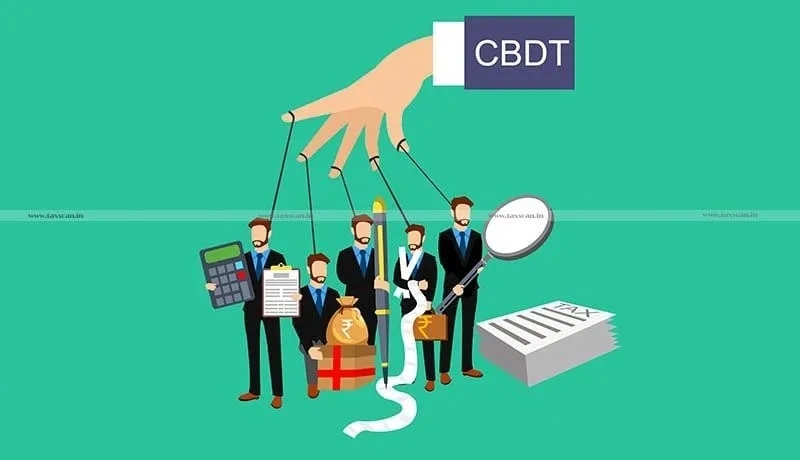The Central Board of Direct Taxes (CBDT) is out with its ambitious tax strategy aimed at enhancing tax collection targets in alignment with its revenue goals for FY26. This strategy is particularly significant considering the government’s decision to forgo ₹ 1 trillion in revenue to offer relief to the middle class, which aligns with the CBDT’s focus on providing fair tax burdens while meeting the ₹ 25.2 trillion objective for direct tax collection. As part of this plan, the CBDT has set specific collection targets across regions, prominently featuring cities like Mumbai and Delhi, to ensure compliance and efficiency in tax collection. By urging its officers to adopt a trust-based approach and tackle existing arrears that accumulated to ₹ 48.17 trillion as of April 1, 2025, the tax authority aims to foster a cooperative environment for taxpayers. Moving forward, the CBDT is not only prioritizing revenue generation but also laying the groundwork for a sustainable taxation ecosystem that supports both growth and public welfare.
In this new financial landscape, the central tax authority, referred to here as CBDT, has laid out a comprehensive fiscal plan aiming to enhance direct tax revenues. With the obligation to meet significant revenue targets, particularly after providing essential financial relief to the middle class, this approach highlights a strategic focus on compliance and efficient tax collection practices. The agency’s vision includes targeted operations in key urban areas, adding a layer of precision to its fiscal policy implementation. Moving forward, the emphasis on aligning regional targets with broader economic goals showcases the CBDT’s commitment to a balanced approach in both relieving taxpayer burdens and achieving necessary revenue milestones. Overall, this planning reflects a proactive stance to ensure sustainable growth while addressing the financial needs of taxpayers.
Understanding the CBDT’s Tax Collection Strategy for FY26
The Central Board of Direct Taxes (CBDT) has outlined a rigorous strategy for the financial year 2026, setting ambitious tax collection targets aimed at generating ₹ 25.2 trillion. This fiscal goal not only highlights the importance of increasing direct tax collection but also reflects the government’s intent to streamline its approach towards managing tax responsibilities. To achieve these targets, the CBDT expects its officers to take a proactive stance, engaging with taxpayers to foster trust and improve compliance. This strategy aligns with the broader objectives of enhancing revenue flows while simultaneously accommodating the needs of the middle class.
Regional performance is at the forefront of the CBDT’s initiative, with specific targets assigned to key regions like Mumbai and Delhi. These areas have historically been significant contributors to tax revenue, and the government is keen on capitalizing on these regions’ potential. The CBDT’s strategy involves breaking down overall targets into manageable segments, allowing officers to focus their efforts on reducing existing tax arrears, which currently total ₹ 48.17 trillion. By prioritizing tax collection within these high-revenue regions, the authority aims to bolster overall compliance rates and minimize outstanding demands.
Frequently Asked Questions
What are the key elements of the CBDT tax strategy for FY26?
The CBDT tax strategy for FY26 focuses on achieving a direct tax collection target of ₹ 25.2 trillion. It emphasizes regional targets, efficiency, and task completion while adopting a trust-based approach to manage taxpayer relationships.
How does CBDT middle class relief impact tax collection targets?
The CBDT middle class relief, including the ₹ 1 trillion foregone in revenue for this year’s budget, significantly impacts tax collection targets by balancing the need for taxpayer support with the government’s goal of meeting direct tax collection objectives in FY26.
Why is the CBDT prioritizing efficiency in its tax collection strategy?
The CBDT is prioritizing efficiency in its tax collection strategy to effectively manage and meet its ambitious ₹ 25.2 trillion direct tax collection target for FY26 while addressing past tax arrears of ₹ 48.17 trillion.
What strategies is the CBDT implementing to reduce tax arrears?
To reduce tax arrears, the CBDT is implementing strategies that include setting specific collection targets for key regions like Mumbai and Delhi, along with urging field officers to adopt a trust-based approach in their administration.
What role do CBDT revenue goals play in the financial strategy for FY26?
CBDT revenue goals play a crucial role in shaping the financial strategy for FY26 as they guide the agency towards achieving a direct tax collection of ₹ 25.2 trillion, balancing taxpayer relief with necessary government revenue.
How are regional targets set by the CBDT important for achieving tax collection goals?
Regional targets set by the CBDT are important as they create focused areas of improvement, particularly in high revenue locations like Mumbai and Delhi, to enhance overall effectiveness in achieving the direct tax collection targets for FY26.
What measures are in place to ensure CBDT achieves its tax collection targets?
To ensure achievement of tax collection targets for FY26, the CBDT is enhancing operational efficiency, reducing tax arrears, and reinforcing a trust-based relationship with taxpayers to foster timely compliance.
What impact does the FY26 tax strategy have on businesses and individuals?
The FY26 tax strategy from the CBDT impacts businesses and individuals by setting clearer expectations for tax compliance while providing temporary relief to the middle class, ultimately aiming for a streamlined tax system.
| Key Points |
|---|
| The Central Board of Direct Taxes (CBDT) has circulated an annual strategy for the new financial year. |
| The government has set a direct tax collection target of ₹ 25.2 trillion for FY26. |
| In this year’s budget, ₹ 1 trillion was forgone to provide relief to the middle class. |
| Tax collection targets are established for different regions, primarily Mumbai and Delhi. |
| Officers are urged to adopt a trust-based approach and improve efficiency. |
| The CBDT aims to reduce existing tax arrears amounting to ₹ 48.17 trillion as of April 1, 2025. |
Summary
The CBDT tax strategy emphasizes a balanced approach to tax collection while providing relief to the middle class. With a target of ₹ 25.2 trillion in direct taxes for FY26, the strategy involves a focus on efficiency and regional collection targets, particularly in major cities like Mumbai and Delhi. Furthermore, addressing tax arrears is a priority as the CBDT seeks to ensure successful fiscal management in the upcoming financial year.



